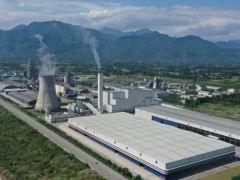据2月7日Arab News报道,油价创下今年以来的最大单周涨幅,达到一年来的最高水平。布伦特原油价格即将突破60美元/桶的重要关口,收于每桶59.34美元,西德克萨斯中质原油(WTI)价格收于每桶56.85美元。
可以说,人们从未想到西德克萨斯中质油价格会在从9个月前的每桶0美元升至每桶55美元,也从未想到布伦特原油会在跌到每桶16美元后升至近每桶60美元。这要归功于欧佩克成功的市场管理,其实施的中期战略平衡了市场,同时也保持了欧佩克在全球能源安全中的领导作用。
来自欧佩克+的紧缩供应已成功地将布伦特原油期货处于现货溢价状态,这鼓励石油交易商从库存中提取石油,暗示着市场走强。
今年1月,欧佩克+在维持石油减产方面保持了很高的一致性,油价的上涨势头并没有让其改变每天减产720万桶的减产决定。
要知道,油价飙升很大一部分是因为欧佩克在市场脆弱和石油需求复苏不确定的情况下发挥了有效的市场领导作用。
此外,在天气转冷的推动下,原油价格持续上涨,导致原油期货曲线进一步走强,抵消了短期需求恢复的挑战性危机,即人们担心新的病毒变种将导致更多的出行限制,加上一些国家正面临疫苗的推广问题。
现在说石油需求已经恢复可能为时过早,局面尚未扭转。欧佩克持续减产的决定也下得太早,使石油市场供小于求。亚洲和欧洲出行限制措施的再次实施,使交通燃料的复苏变得愈发脆弱,全球商业航班已回落至2019年可比水平的60%以下。此外,美国能源信息署(EIA)预计,到2025年,美国的能源消耗将回到疫情爆发前的水平,因为石油需求复苏的预期在很大程度上取决于经济复苏的步伐。
冯于荣 摘译自Arab News
原文如下:
WEEKLY ENERGY RECAP: Global oil prices reach pre-pandemic levels at a one-year high
Oil prices made their biggest weekly gain this year, reaching pre-pandemic levels at a one-year high. The price of Brent crude is about to breach the important psychological mark of $60, closing the week at $59.34 per barrel. The price of West Texas Intermediate (WTI) crude closed the week at $56.85 per barrel.
Prices have reached a year high — the market never imagined that the price of WTI would breach $55 per barrel after going below zero 9 months ago or that Brent crude would reach nearly $60 per barrel after touching $16 per barrel. The credit goes to the successful market management of OPEC and its leadership role in implementing medium-term strategies to balance the market while maintaining the principle of global energy security.
Tighter supplies from OPEC+ have successfully turned the Brent future curve to backwardation, which encourages oil traders to take oil out of storage, signaling a stronger market.
In January this year, OPEC+ achieved high compliance in maintaining oil output cuts; an upward momentum in oil prices did not alter its output cuts of 7.2 million barrels per day (bpd).
The price surge is due to OPEC’s effective market leadership despite the fragile market and uncertain oil demand recovery.
Also, the outlook for a tightening physical crude market amid continuing stock draws, helped by colder weather, has led crude’s futures curve to further strengthening, offsetting the challenging short-term demand recovery amid concern that the new virus variants will lead to more lockdowns and that some countries are facing vaccine rollouts issues.
It might be too early for oil demand recovery to do a U-turn. It might also be too early for OPEC+ output cuts to tighten the oil market to be in a deficit this year. Asia and Europe are setting back a fragile recovery in transport fuels with renewed lockdowns, and worldwide commercial flights have fallen back to less than 60 percent of comparable 2019 levels. In addition, the US Energy Information Administration (EIA) expects that energy consumption in the US will return to pre-pandemic levels by 2025 as the expectations of oil demand recovery depend greatly on the pace of the economic recovery.







